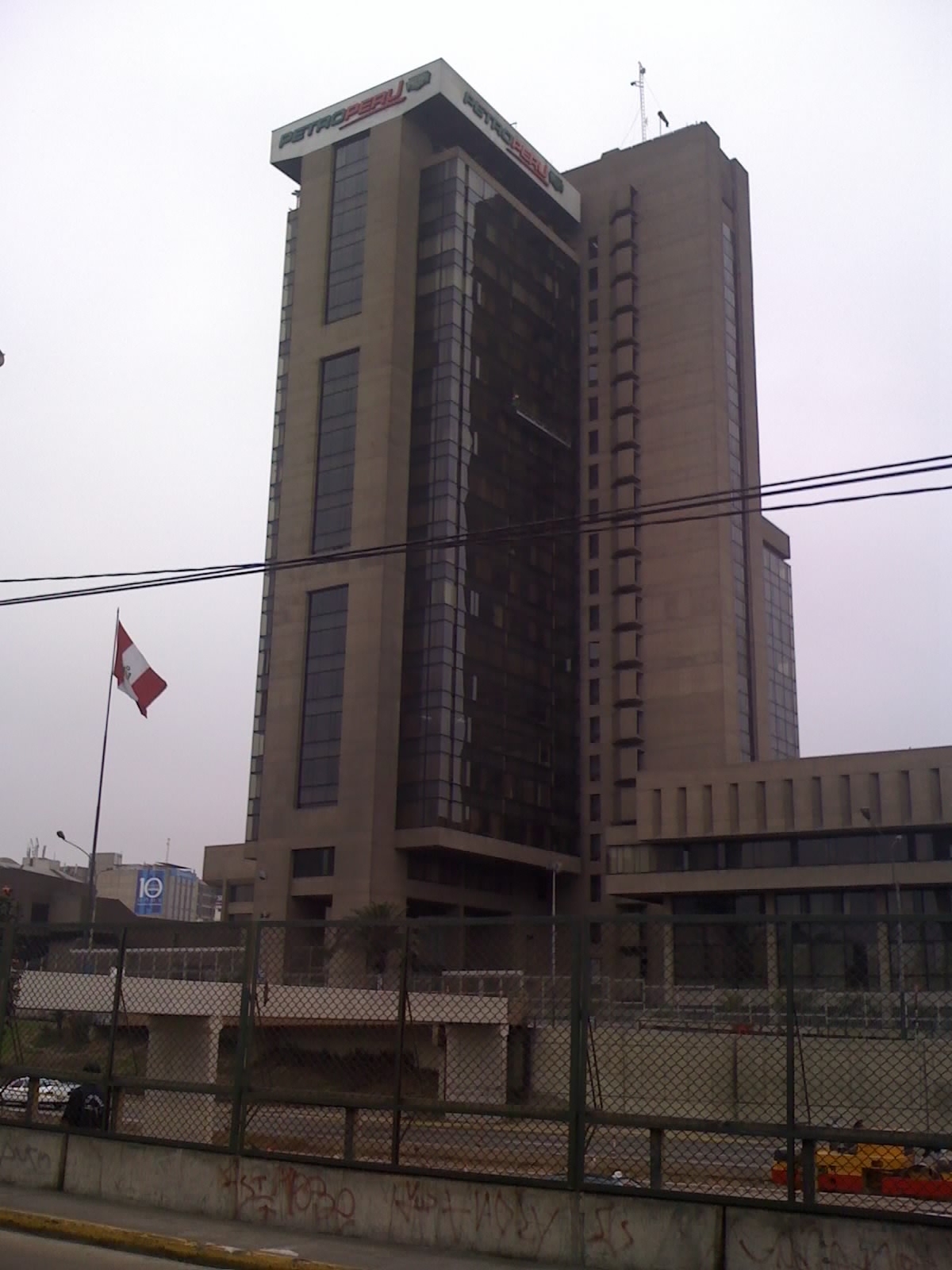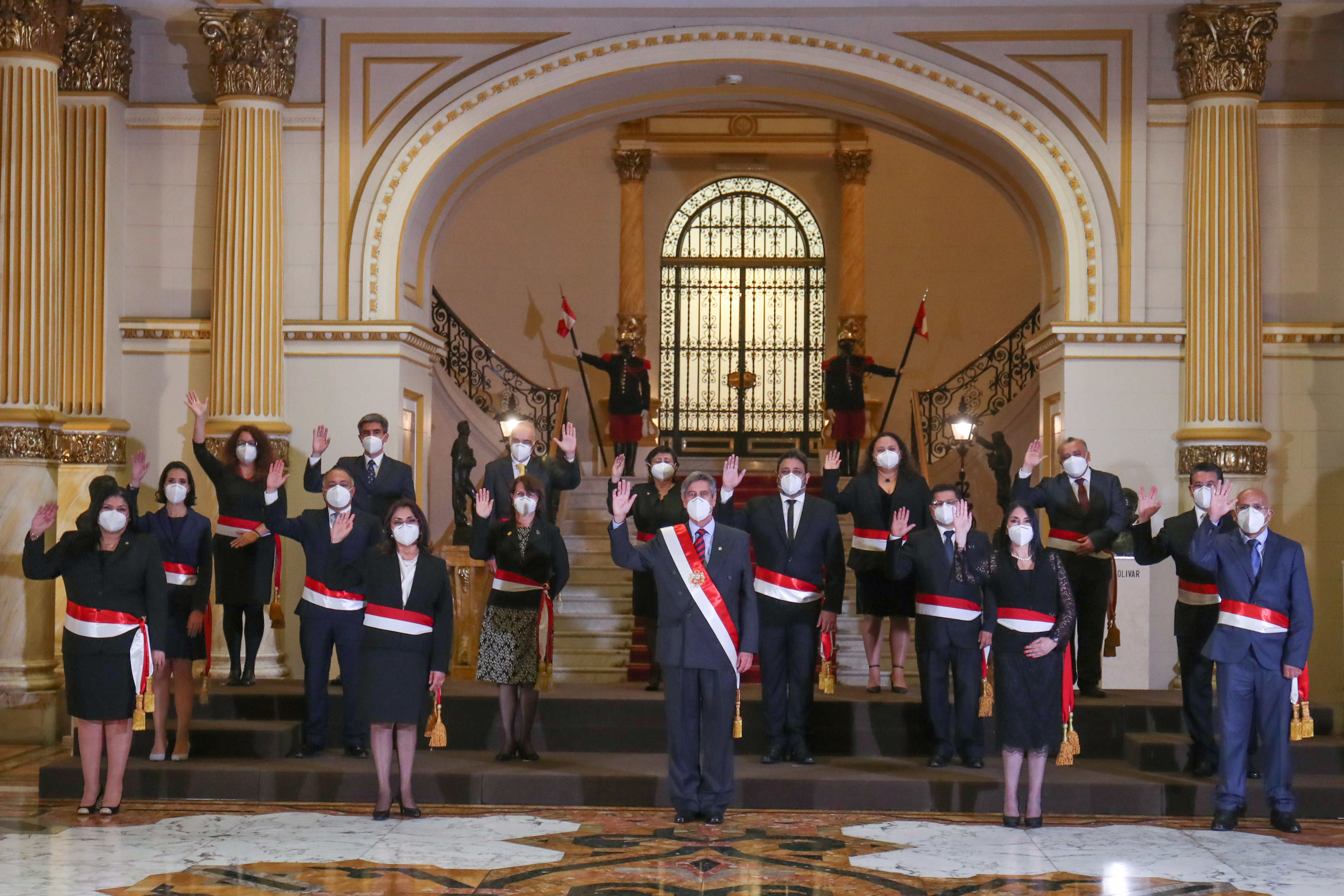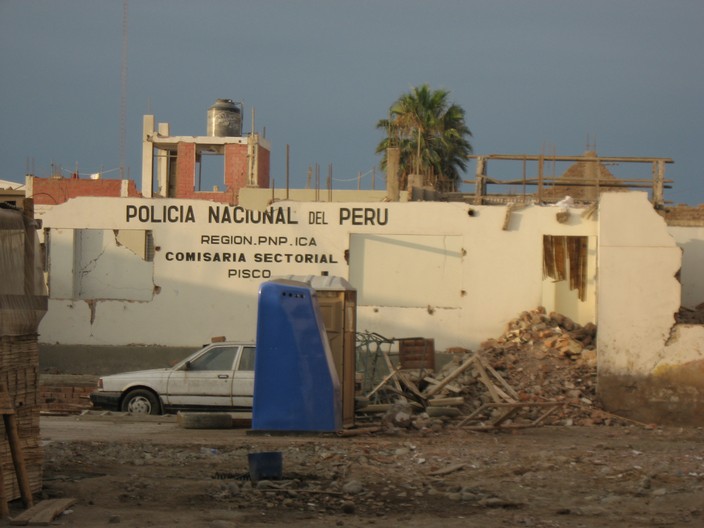|
Petroperú
Petróleos del Perú (), better known as Petroperú, is a Peruvian state-owned enterprise and private law dedicated to the transportation, refining, distribution, and commercialization of fuels and other petroleum products. It has been owned by the State of Peru since 1969, is considered among the taxpayers to the treasury, and currently employs more than 2,500 people. Petroperú invests in education, health, and other sustainable development projects throughout the Peruvian territory. Among the current strategic objectives of the company are the supply of fuel to the entire Peruvian market, as well as financial sustainability and its operations, with an emphasis on safety and care for the environment. History Background On October 9, 1968, the dictatorship of General Juan Velasco Alvarado ordered the seizure and summary expropriation of the facilities of The International Petroleum Company (IPC), a subsidiary of Standard Oil of New Jersey, at the Talara refinery (Piura De ... [...More Info...] [...Related Items...] OR: [Wikipedia] [Google] [Baidu] |
Edificio Petroperú
The Petroperú Building is a building located in San Isidro District, Lima. It functions as the main office of Petroperú, a state company dedicated to refining, transporting, distributing and marketing oil in Peru. History The building, designed by the architects Daniel Arana Ríos and Walter Weberhofer, was the winning design in a contest organised by the military government of Juan Velasco Alvarado in the early 1970s. The building, strategically located in central San Isidro, was projected to host the offices of state company Petroperú, being inaugurated in 1973. Overview It stands at the intersection of Luis Bedoya Reyes and Canaval y Moreyra avenues. It has twenty-two floors and three basements in addition to having a helipad on top and is part of the architectural style known as brutalism. In addition to Petroperú, the building houses several public offices as well as the Ministry of Housing, Construction and Sanitation, the Agency for the Promotion of Private Investme ... [...More Info...] [...Related Items...] OR: [Wikipedia] [Google] [Baidu] |
Juan Francisco Velasco Alvarado
Juan Francisco Velasco Alvarado (June 16, 1910 – December 24, 1977) was a Peruvian general who served as the President of Peru after a successful coup d'état against Fernando Belaúnde's presidency in 1968. Under his presidency, nationalism, as well as left-leaning policies that addressed indigenous Peruvians, such as nationalization or agrarian reform were adopted. These policies were reversed after another Tacnazo, coup d'état in 1975 led by his Prime Minister, Francisco Morales Bermúdez. Velasco had a confrontational foreign policy towards the United States, as he pushed for renegotiation of treaties and criticized what he perceived as a pernicious dependence of Latin American states on the United States. While he strengthened Peruvian relations with the Soviet Union, Velasco was firmly anti-communist. His foreign policy has been described as "Non-Aligned Movement, third way." Early life Juan Velasco was born in Castilla, a city near Piura on Peru's north coast. He ... [...More Info...] [...Related Items...] OR: [Wikipedia] [Google] [Baidu] |
List Of Petroleum Companies
The following is a list of notable companies in the petroleum industry that are engaged in petroleum exploration and production. The list is in alphabetical order by continent and then by country. This list does not include companies only involved in refining and marketing. See also * List of largest oil and gas companies by revenue * List of oilfield service companies This is a list of oilfield service companies – which provide services to the petroleum exploration and production industry but do not typically produce petroleum. In the list, notable subsidiary companies and divisions are listed as sub-lists o ... References {{DEFAULTSORT:Oil Exploration And Production Companies, List Of Lists of energy companies Oil companies Oil exploration Oil exploration ... [...More Info...] [...Related Items...] OR: [Wikipedia] [Google] [Baidu] |
International Petroleum Company
International Petroleum Company, Ltd. (IPC) was a subsidiary of Standard Oil of New Jersey, based in Toronto, Canada. It began operating in Peru in 1914 to replace the British ''London Pacific Petroleum Company'', and was active until 1969. In that country, it exploited the La Brea and Pariñas field (among others), establishing its processing centre and refinery in Talara for the production of petroleum derivatives. History The company was the protagonist of a strong scandal when it refused to pay the full amount of taxes to which it was obliged, according to the Peruvian State. It even achieved advantageous exceptions thanks to successive pro-American governments. In August 1968, during the first government of Fernando Belaúnde, the "Act of Talara" was signed, by which the IPC returned the oil fields to the Peruvian State, but preserved the Talara Refinery and the fuel distribution network. Shortly after, the so-called "page eleven scandal" broke out, surrounding an allege ... [...More Info...] [...Related Items...] OR: [Wikipedia] [Google] [Baidu] |
Juan Velasco Alvarado
Juan Francisco Velasco Alvarado (June 16, 1910 – December 24, 1977) was a Peruvian Army general, general who served as the President of Peru after a successful 1968 Peruvian coup d'état, coup d'état against Fernando Belaúnde's presidency in 1968. Under his Revolutionary Government of the Armed Forces of Peru, presidency, nationalism, as well as left-leaning policies that addressed Indigenous peoples of Peru, indigenous Peruvians, such as nationalization or Peruvian Agrarian Reform, agrarian reform were adopted. These policies were reversed after another Tacnazo, coup d'état in 1975 led by his Prime Minister, Francisco Morales Bermúdez. Velasco had a confrontational foreign policy towards the United States, as he pushed for renegotiation of treaties and criticized what he perceived as a pernicious dependence of Latin American states on the United States. While he strengthened Peruvian relations with the Soviet Union, Velasco was firmly anti-communist. His foreign policy h ... [...More Info...] [...Related Items...] OR: [Wikipedia] [Google] [Baidu] |
Petroleum
Petroleum, also known as crude oil or simply oil, is a naturally occurring, yellowish-black liquid chemical mixture found in geological formations, consisting mainly of hydrocarbons. The term ''petroleum'' refers both to naturally occurring unprocessed crude oil, as well as to petroleum products that consist of refining, refined crude oil. Petroleum is a fossil fuel formed over millions of years from anaerobic decay of organic materials from buried prehistoric life, prehistoric organisms, particularly planktons and algae, and 70% of the world's oil deposits were formed during the Mesozoic. Conventional reserves of petroleum are primarily recovered by oil drilling, drilling, which is done after a study of the relevant structural geology, sedimentary basin analysis, analysis of the sedimentary basin, and reservoir characterization, characterization of the petroleum reservoir. There are also unconventional (oil & gas) reservoir, unconventional reserves such as oil sands and oil sh ... [...More Info...] [...Related Items...] OR: [Wikipedia] [Google] [Baidu] |
Social And Environmental Responsibility World Forum
The Social and Environmental Responsibility World Forum is an initiative organized by the Réseau Alliances in 1993 in partnership with private and public organizations, to encourage social and economic responsibility among businesses. The initiative was planned for four years (2007–2010), with the goal of creating a permanent cycle of continuous exchanges and communication between actors from all parts of the world. The work of the Forum was based on concrete projects and actions to formulate to generalize social and environmental responsibility throughout the world. During that period, major events were supposed to take place in Lille to bring together actors and experts in social and environmental responsibility of all nationalities, especially during the international meetings scheduled in October each year. Developed on economic leaders’ initiative, the ''Réseau Alliances'' federates and helps businesses anxious to improve their performance while being more respectful ... [...More Info...] [...Related Items...] OR: [Wikipedia] [Google] [Baidu] |
Tacna
Tacna, officially known as San Pedro de Tacna, is a city in southern Peru and the regional capital of the Tacna Region. A very commercially active city, it is located only north of the border with Arica y Parinacota Region from Chile, inland from the Pacific Ocean and in the valley of the Caplina River. It is Peru's tenth most populous city. The city has gained a reputation for its patriotism, with many monuments and streets named after heroes of Peru's struggle for independence (1821–1824) and the War of the Pacific (1879–1883). Residents of Tacna are known in Spanish as '. History Pre-Columbian era At the time of the Spanish conquest, the region around Tacna was already multiethnic, displaying a mix of local sedentary populations and mitma settlers from the Altiplano. The proportions of these are that the first made up about 66% of the population and the latter 25%. Fishing-oreinted people known as Camanchacos made up about the remaining 9% of the population. Muc ... [...More Info...] [...Related Items...] OR: [Wikipedia] [Google] [Baidu] |
Moquegua
Moquegua (, founded by the Spanish colonists as Villa de Santa Catalina de Guadalcázar del Valle de Moquegua) is a city in southern Peru, located in the Department of Moquegua, of which it is the capital. It is also capital of Mariscal Nieto Province and Moquegua District. It is located 1144 kilometers south of the capital city of Lima. History This region was occupied for thousands of years by successive cultures of indigenous peoples. The Wari culture built numerous monuments, and developed terrace (agriculture), terraced fields to support crop cultivation on hillsides hundreds of years before the Inca conquered them and expanded their territory into this area. Osmore River#Cerro Baul, Cerro Baúl is the remains of a Wari monumental site, on top of a hill outside of Moquegua. Numerous Tiwanaku sites are also in the area. It was an important colonial center for the Tiwanaku state. The valley is the only area of Peru to house both Wari and Tiwanaku ruins. The Chiribaya culture ... [...More Info...] [...Related Items...] OR: [Wikipedia] [Google] [Baidu] |
Arequipa
Arequipa (; Aymara language, Aymara and ), also known by its nicknames of ''Ciudad Blanca'' (Spanish for "White City") and ''León del Sur'' (Spanish for "South's Lion"), is a city in Peru and the capital of the eponymous Arequipa (province), province and department of Arequipa, department. It is the seat of the Constitutional Court of Peru and often dubbed the "legal capital of Peru". It is the second most populated city in Peru, after the capital Lima, with an urban population of 1,296,278 inhabitants according to the 2017 national census. known for its colonial architecture and volcanic stone buildings, it is a major cultural and economic center. Its metropolitan area integrates twenty-one districts, including the foundational central area, which it is the seat of the city government. The city had a nominal GDP of US$9,445 million, equivalent to US$10,277 per capita (US$18,610 per capita PPP) in 2015, making Arequipa the city with the second-highest economic activity in Peru ... [...More Info...] [...Related Items...] OR: [Wikipedia] [Google] [Baidu] |
Francisco Sagasti
Francisco Rafael Sagasti Hochhausler (; born 10 October 1944) is a Peruvian engineer, academic, politician, and author who served as the President of Peru from November 2020 to July 2021. Sagasti has worked as an advisor for economic development at the International Development Research Centre, World Bank, UNCSTD and the World Economic Forum. After the 1992 Peruvian constitutional crisis, Sagasti left his position at the World Bank to return to Peru. In 2016, he helped found the centrist Purple Party with Julio Guzmán. Following the dissolution of congress in 2019, he was elected into congress in January 2020, serving from March to November 2020 as a Member of Congress, representing the Lima constituency. On 10 November 2020, following a controversial express impeachment and removal of President Martín Vizcarra by Congress due to allegations of "moral incapacity" (a 19th century concept for mental incapacity), President of Congress Manuel Merino became President of Pe ... [...More Info...] [...Related Items...] OR: [Wikipedia] [Google] [Baidu] |
Pisco, Peru
Pisco () is a city located in the Department of Ica of Peru, the capital of the Pisco Province. The city is around 9 metres (28 feet) above sea level. Pisco was founded in 1640, close to the indigenous emplacement of the same name. Pisco originally prospered because of its nearby vineyards and became noted for its grape brandy or pisco which was exported from its port. Pisco has an estimated population of 104,656 (est. 2015). History Mid 16th Century: Pisco is Born The town of Santa Maria Magdalena, which was founded in 1572, had a port named Pisco, after the name of the valley in which it was located. This port became an important route for distribution of the liqueur throughout Peru. Demand for the product grew as sailors from around the world who called into the Port of Pisco created an important international trade link and further demand for the product. Over time, the town of Santa Maria Magdalena became simply known as ' Pisco' with the same name adopted for the grape ... [...More Info...] [...Related Items...] OR: [Wikipedia] [Google] [Baidu] |




